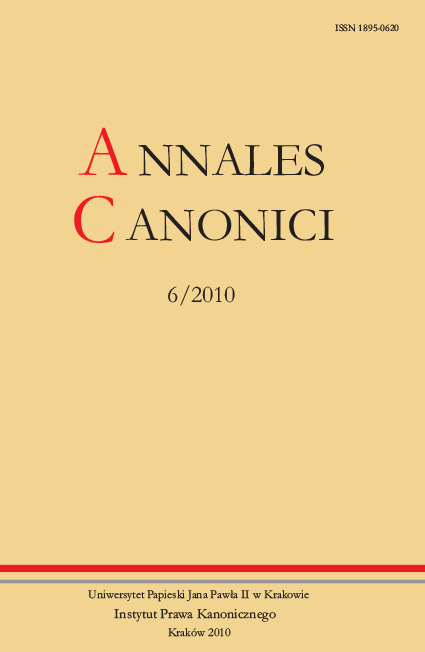Aplikacja owoców Mszy św.
DOI:
https://doi.org/10.15633/ac.0610Abstrakt
The application of the Mass presupposes the doctrine of the Catholic theology about the various fruits of the Mass. Three kinds of fruits or effects are usually recognized: the holy sacrifice benefits the entire Church (a general fruit – generalis, comunis, universalis); it benefits the celebrating priest himself (a very special fruit – specialissimus); the Mass may be applied to the specific intentions of the celebrant (a special fruit – ministerialis, medius, specialis). The application must be “objectively determined” and it must be made before the consecration. According to the Code of canon law from 1983, the Mass may be applied for anybody. That norm is considerably different from its correlate in the 1917 code which said that Mass may be applied for the in purgatory or for the living with the exception of public Masses for the excommunicated. Private Masses could be applied for tolerated excommunicates, which included baptized non-Catholics, but for excommunicates who must be avoided, a private Mass could be applied only for their conversion. Today the limitations refer to situations in which the application of the Mass constitutes a public (know) event. A funeral Mass may not be celebrated for those who have been excluded from ecclesiastical funerals in can. 1185 CIC.
Pobrania
Opublikowane
Numer
Dział
Licencja
Prawa autorskie (c) 2010 Tomasz Jakubiak

Utwór dostępny jest na licencji Creative Commons Uznanie autorstwa 4.0 Międzynarodowe.
Autorzy publikujący w czasopiśmie udzielają jego wydawcy zgody o następującej treści:
- Autor zachowuje autorskie prawa majątkowe do utworu, a jednocześnie udziela wydawcy czasopisma zgody na jego pierwszą publikację w wersji drukowanej i wersji online na licencji Creative Commons Uznanie autorstwa 4.0 Międzynarodowe oraz zgody na wykonywanie opracowań, w tym przekładów.
- Autor ma możliwość udzielania zgody niewyłącznej na opublikowanie utworu w wersji, która ukazała się w czasopiśmie (np. zamieszczenia go w repozytorium instytucjonalnym lub opublikowania w książce), wraz z informacją o jego pierwszej publikacji w czasopiśmie.
- Autor może umieścić swój utwór online (np. w repozytorium instytucjonalnym lub na swojej stronie internetowej) jeszcze przed zgłoszeniem utworu do czasopisma.

